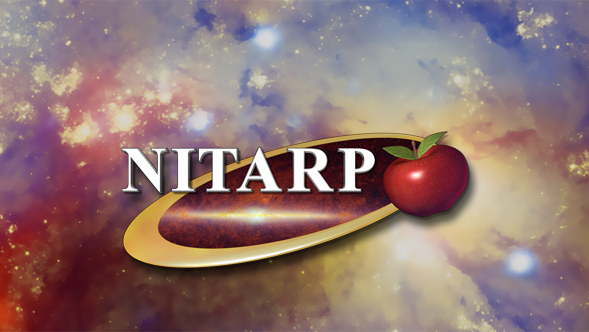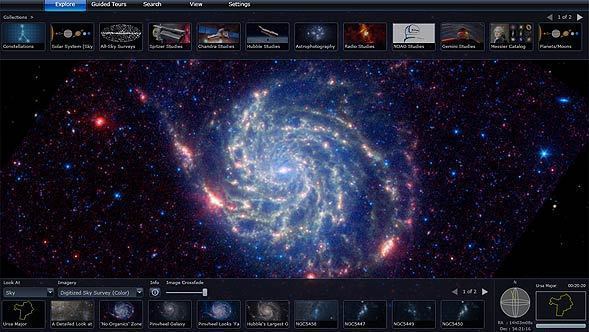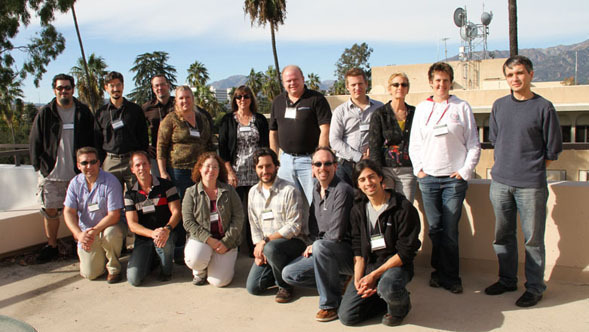
By Luisa Rebull | November 16th, 2010
I have the pleasure of announcing the 2011 class of educators for NITARP, the NASA/IPAC Teacher Archive Research Program! NITARP is the successor to the highly successful Spitzer Teacher Program and is an effective and inspiring way to get authentic research experiences into classrooms across the United States. We partner professional scientists with (primarily) high school teachers, carry out an original research project, and present the results at the semi-annual meeting of the American Astronomical Society. The teachers incorporate the experience into their classrooms and share their experience with other teachers.
This program, to the best of our knowledge, is completely unique in the following two important ways: (1) each team does original research using real astronomical data, not canned labs or reproductions of previously done research; (2) each team writes up the results of their research and presents it at an American Astronomical Society meeting (the AAS is the professional organization for astronomers in the US). Each team also presents the educational results of their experience in the program.
This year (2010), we had 14 educators of a wide variety of backgrounds, and they are working on NINE(!!) different posters on their science and education results to take to the 217th meeting of the American Astronomical Society, planned for January 2011 in Seattle. I'll have another blog posting soon on the broad spectrum of projects and results they're presenting.
This past year, we expanded the program to include community college professors as well as some of the non-astronomer professionals at IPAC. This has brought new skills and insight and role models to the teams, and this coming year we will still have some of those IPAC folks participating. This year, we are now beginning to include some more educators from more unusual venues, such as the amateur astronomical community -- these non-traditional educators often reach thousands of people per year, and thus provide us another venue to convey the excitement of real research to the general public.
And finally, here for the first time ever, is the brand-new list of 12 teachers to start with the program in January 2011! They are non-traditional educators and high school teachers. They are from big cities (greater Los Angeles) and small towns (Kickapoo Nation). They are from Florida and Oregon, Arizona and Minnesota. They will study nearby things and far away things. Look for results of their projects in January 2012!!
- Team working with Dr. Luisa Rebull (SSC)
- Chelen Johnson (Breck School, Minneapolis, MN) teacher mentor for team
- John Gibbs (Glencoe High School, Hillboro, OR)
- Marcella Linahan (Carmel Catholic High School, Mundelein, IL)
- Diane Sartore (Pine Ridge High School, Deltona, FL)
- Russ Laher (Spitzer Science Center, Pasadena, CA)
- Mark Legassie (Raytheon and Spitzer Science Center, Pasadena, CA)
- Team working with Dr. Varoujan Gorjian (SSC/JPL)
- Tim Spuck (Oil City Area High School, Oil City, PA) teacher mentor for team
- Merrill Butler (Orange County Astronomers, Orange, CA)
- Adam Keeton (North High School, Eau Claire, WI)
- Shefali Mehta (Haddam-Killingworth High School, Higganum, CT)
- Mark Abajian (IPAC, Pasadena, CA)
- Team working with Dr. Steve Howell (NOAO)
- John Blackwell (Phillips Exeter Academy, Exeter, NH) teacher mentor for team
- Stacy DeVeau (Arizona NASA Educator Resource Center, Prescott, AZ)
- Debbie Edwards (Sherando High School, Stephens City, VA)
- Michiel Ford (Kickapoo Nation School, Powhattan, KS)
The Spitzer Science Center (SSC) and the NASA Infrared Processing and Analysis Center (IPAC) (with help from the National Optical Astronomy Observatory (NOAO)) are leading this program. We select teachers from a nation-wide selection process. We use archival data from the Spitzer Space Telescope, the NASA/IPAC Extragalactic Database (NED), the NASA/IPAC/NExScI Star and Exoplanet Database (NStED), the NASA/IPAC Infrared Science Archive (IRSA) and other NASA archive holdings. Our funding comes from the NASA Astrophysics Data Program (which is where professional astronomers go for Spitzer archival research) and the other archives at IPAC.
 Exploring Spitzer Pictures in WorldWide Telescope
Exploring Spitzer Pictures in WorldWide Telescope
 High-Tech Astronomy Images: The Workshop
High-Tech Astronomy Images: The Workshop



